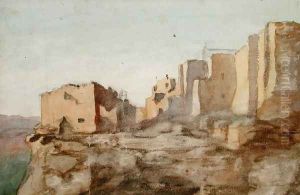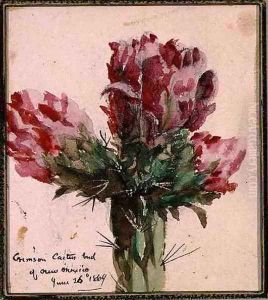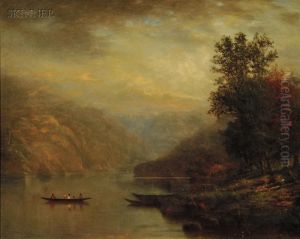Vincent Colyer Paintings
Vincent Colyer was an American artist born on June 26, 1825, in Bloomingdale, New York. Best known for his work as a painter, Colyer was also an active humanitarian and government worker. His early life was marked by a passion for art, which led him to pursue his artistic education. Colyer initially apprenticed with a sign painter in New York City, where he gained valuable skills that would later contribute to his artistic career.
Colyer's work as a painter was largely influenced by the Hudson River School, a mid-19th century American art movement embodied by a group of landscape painters who were inspired by romanticism. Their work was characterized by their realistic and detailed portrayal of the American landscape, particularly the Hudson River Valley, the Catskills, and the Adirondacks. Colyer was not formally a member of this group but was heavily influenced by their style and the natural beauty of the American landscape, which is evident in his own landscape paintings.
In addition to his artistic pursuits, Colyer was deeply involved in social issues of his time. During the American Civil War, he served as a superintendent of the United States Christian Commission, providing aid to soldiers. Following the war, Colyer was appointed by President Ulysses S. Grant to serve as a special Indian commissioner. In this role, he was tasked with inspecting the condition of Native American reservations in the Western United States. His experiences and the scenes he witnessed on these reservations profoundly impacted his views and his art. Colyer's sketches and reports from his time as a commissioner provided valuable insights into the lives of Native Americans during that period and helped influence government policy.
Colyer continued to paint throughout his life, documenting the American landscape and the people he encountered with a sympathetic and detailed eye. His artworks are considered valuable records of the time, capturing the transforming landscapes and cultures of 19th-century America.
Vincent Colyer's commitment to both art and social service shaped a legacy that went beyond his canvases. He died on July 12, 1888, in Washington, Connecticut, leaving behind a body of work that continues to be appreciated for its historic and artistic value. His paintings reside in various collections and are studied for their contribution to the documentation of American history and the aesthetic of the period in which he lived.



